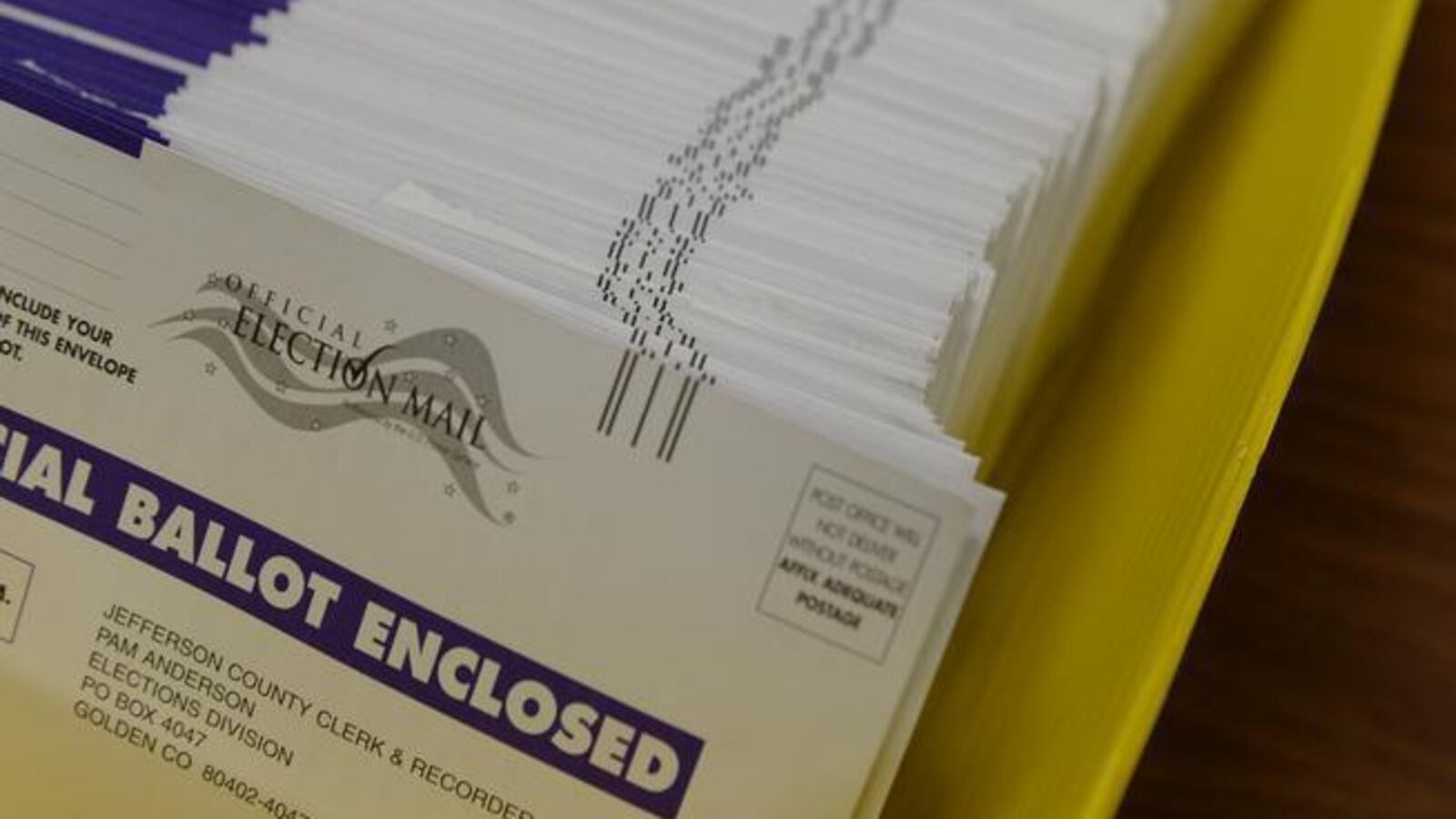A $1.6 billion initiative to benefit Colorado schools, paid for by higher taxes on corporations and wealthier individuals, will appear on the ballot this November.
The Colorado Secretary of State’s Office said on Thursday that supporters of the measure had more than met the signature requirements.
Supporters of the effort, dubbed Great Schools, Thriving Communities, turned in 179,390 signatures last month, of which 130,022 were deemed valid. They needed just 98,492 valid signatures to get on the ballot. Under more stringent requirements adopted by voters in 2016, those signatures also needed to represent 2 percent of the registered voters in every state Senate district.
Initiative 93 represents the third attempt in seven years to raise money for education. Colorado’s Taxpayer’s Bill of Rights requires that voters approve any tax increase, and voters have twice before rejected statewide school funding measures by wide margins, most recently in 2013. To pass, Initiative 93 would need approval from 55 percent of voters.
The measure could share the ballot with a major tax increase for transportation, as well as a measure that would require the state to spend more on roads without raising taxes.
In addition to raising taxes for schools, Initiative 93 would fully fund all-day kindergarten and increase funding for preschool and for students with particular needs, such as those learning English and those who have disabilities. School districts would have broad discretion, though, about how to spend the new revenue.
Conservative critics of the measure say that’s one problem with it. In their view, it amounts to putting a lot more money into a system that has not significantly improved student achievement, without clear mechanisms to change that.
“The research is clear that simply adding more money to the same system will not lead to increased student achievement,” the conservative education reform advocacy group Ready Colorado said in an email to members. “Funding increases should be tied to policies that will improve educational outcomes.”
The group also criticized the measure for introducing a tiered tax system to replace Colorado’s flat income tax. That’s one key difference between this attempt and Amendment 66 in 2013. The last effort would have raised taxes on everyone, while this tax increase would affect those earning more than $150,000.
In contrast, the Colorado Children’s Campaign quickly issued a statement in support of the measure, calling it a “once-in-a-generation opportunity to create an education financing system that is more adequate, modern, equitable, and sustainable. This is the first step in removing structural barriers to opportunity and ensuring every chance for every child to succeed.”
Colorado ranks 28th among states in per-pupil spending, when all state, local, and federal dollars are combined, according to the most recent ranking from the National Education Association. However, school funding varies considerably around the state, and half of Colorado school districts, most of them in rural areas, operate on a four-day week because they can’t afford to be open five days.
Since the Great Recession, state lawmakers have held back $7.5 billion in money that would have otherwise gone to schools under a formula in the state constitution. The 2018-19 state budget included a 6.95 percent increase for K-12 education, but those who want to see more money for schools say it doesn’t begin to address years of underfunding.
Earlier this summer, Denver-based pollster Floyd Ciruli told Chalkbeat that statewide tax increases remain a tough sell in Colorado, but the prominence of education in the contentious Democratic primary for governor may have “primed” the electorate on this issue.
Some school districts are already talking about how they’ll spend the money. Denver Public Schools, which is currently engaged in negotiations with its teachers union, announced Thursday that it would put $36 million toward teacher pay if the tax increase passes, including raising starting pay and offering larger incentives to teachers who work in more challenging schools. The 2,300-student Sterling district on Colorado’s Eastern Plains also met recently with its teachers to discuss how to spend an estimated $3.7 million that district would get from the tax increase.
This isn’t just wishful thinking: It’s also part of marketing the tax increase to the public.
The tax measure calls for:
- Raising the corporate income tax rate from 4.63 percent to 6 percent.
- Raising the personal income tax rate from a flat 4.63 percent to between 5 percent and 8.25 percent for people earning more than $150,000. The highest tax rate would be paid by people earning $500,000 or more.
- Setting the residential property assessment rate at 7 percent of market value for schools. That’s lower than it is now but higher than it is predicted to be in 2019 because current law has the unintended effect of gradually reducing the residential assessment rate.
- Setting the non-residential property assessment rate at 24 percent of market value, less than the current 29 percent.
According to an initial fiscal analysis by the state, the average taxpayer earning more than $150,000 would pay an additional $519 a year, while those earning less would be unaffected. The average corporate taxpayer would pay an additional $11,085 a year. The change in property taxes would vary considerably around the state, but based on the average statewide school levy, many property owners would pay $28 more on each $100,000 of market value in 2019 than they otherwise would. Commercial property owners will see a decrease.

